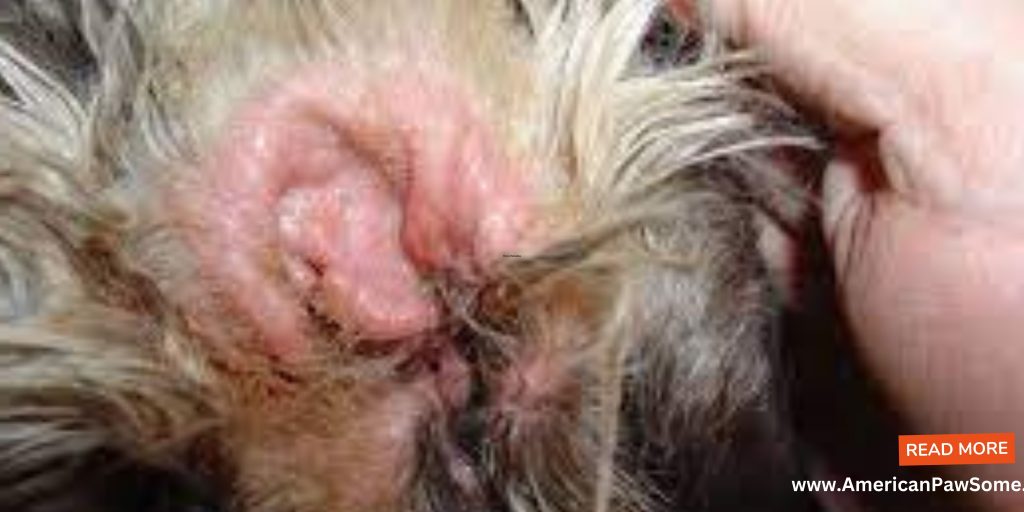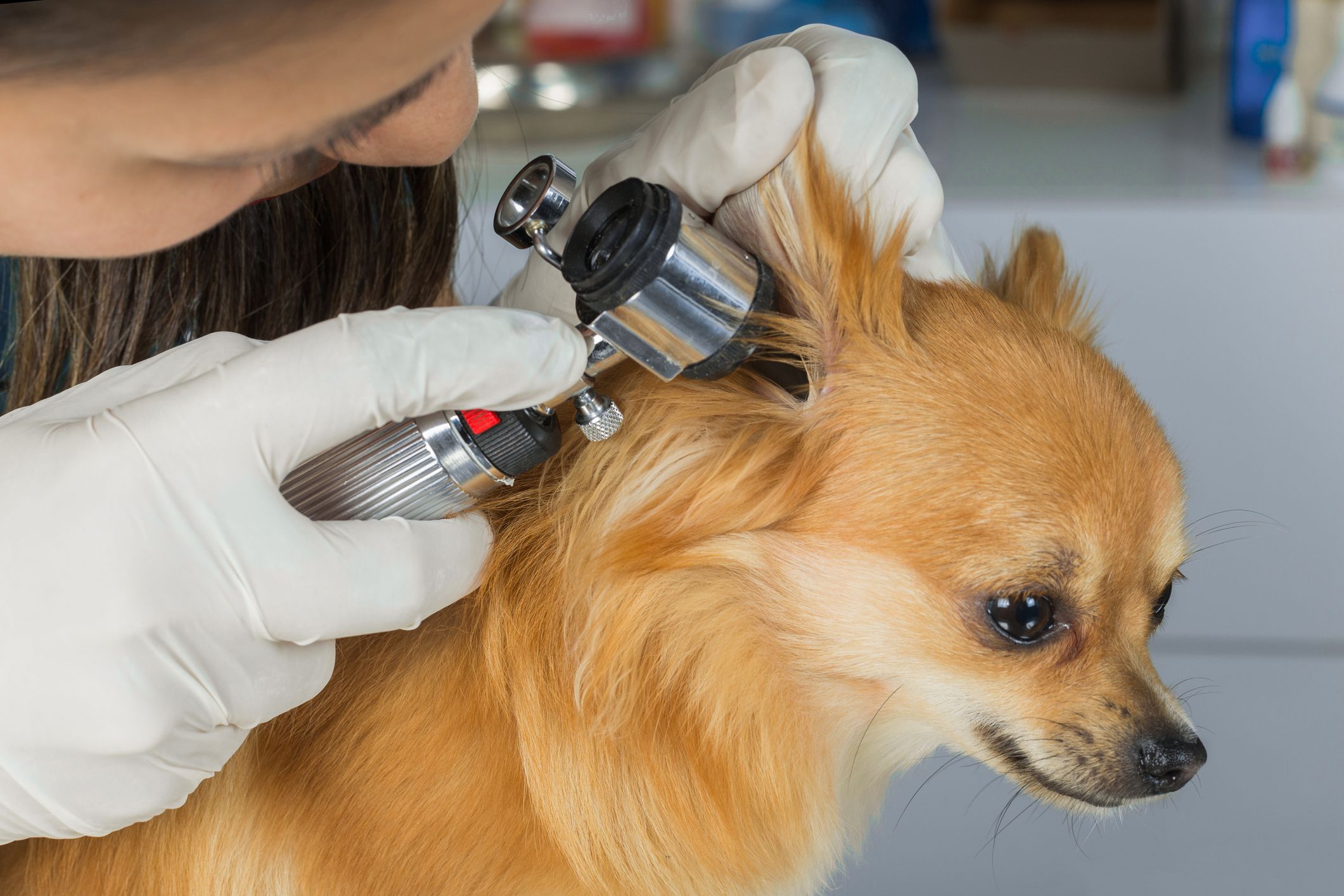Hey there, fellow dog enthusiasts! We’re diving into some real talk today about a not-so-fun topic: yeast infections in our furry buddies’ ears. You know the itchiness, the discomfort – it’s no joke. But fear not, because we’re about to lay down the lowdown on what’s causing the chaos, how to spot the signs, and most importantly, how to make your pup’s ears feel like a million bucks again.
What’s the Deal with Ear Yeast Infections?

Alright, let’s break it down in simple terms. Think of yeast infections in your dog’s ears as those unwanted houseguests who just won’t leave. They go by the name Candida yeast. Sometimes, they party a little too hard due to factors like moisture overload, not-so-stellar cleanliness, allergies, or a less-than-enthusiastic immune system. And hey, if your pup rocks those droopy ears like Cocker Spaniels or Basset Hounds, they’re in the prime real estate for these infections – their ears just don’t get enough air.
Spotting Trouble: Signs of Ear Yeast Infections

Alright, let’s play detective for a moment. Keep your pup’s ears on your radar for these telltale signs that yeast might be crashing the party:
- Scratch Fever: If your furball is suddenly all about scratching its ears or giving it’s head a good shake, it’s a red flag.
- Ear Drama: Got some funky-smelling, brownish goo in the ear zone? Bingo, that’s a yeast alert.
- Seeing Red (and Swollen): When those ear canals turn red and puff up, it’s like a neon sign that something’s up.
- Ear Ouchies: If your pup’s not down with ear-touching time or seems more uncomfortable than usual, it’s worth investigating.
- The Head Tilt: If your furry buddy’s rocking a permanent head tilt, well, yeast might just be the culprit.
Putting Up a Fight Against Yeast Invaders

- Chit-Chat with the Vet: Before you start your at-home healing journey, a chat with the vet is a must. They’re the experts who can give you the real scoop and a game plan.
- Gentle Ear Love: Think of it as a spa day for your pup’s ears. Using a vet-approved ear cleaner, gently clean up excess wax and whatever’s hanging around.
- Power Moves: Sometimes, big guns are needed. Your vet might dish out antifungal ear drops or creams to give that yeast a reality check.
- Food Makeover: Believe it or not, diet plays a role. Switching your four-legged pal to a low-carb, grain-free menu can help slow down that yeast growth.
- TLC for Ears: Regular cleaning – not too much, not too little – is the name of the game for happy ears.
- Allergy Allies: If allergies are gatecrashing the party, antihistamines or some allergy management might be the game-changer.
- Immunity Boost: Keeping your pup’s immune system in fighting shape with good food, exercise, and those vet visits is the secret weapon.
- Dry Digs: Your pup’s home sweet home should be clean and dry. Bye-bye, moisture – that’s what yeast loves.
- Stay in the Loop: Even after kicking yeast to the curb, stay in touch with the vet to keep things under control.
FAQs: Dealing with Yeast Infections in Dogs’ Ears
What causes yeast infections in dogs’ ears?
Yeast infections are often triggered by an overgrowth of Candida yeast due to factors like moisture, poor hygiene, allergies, or a weakened immune system.
How can I tell if my dog has a yeast infection in their ears?
Keep an eye out for signs like persistent scratching, head shaking, brown waxy discharge, redness, swelling, and discomfort when touching the ears.
Can I treat my dog’s ear yeast infection at home?
While there are some home remedies, it’s best to consult a vet for proper diagnosis and treatment recommendations tailored to your dog’s needs.
What should I use to clean my dog’s ears to prevent yeast infections?
Opt for a vet-recommended ear cleaner to gently remove excess wax and debris. Avoid using cotton swabs as they can push debris further into the ear canal.
Are there any natural remedies that can help with yeast infections?
Some natural remedies like diluted apple cider vinegar or coconut oil may offer temporary relief, but consulting a vet is crucial for an effective treatment plan.
Can my dog’s diet contribute to ear yeast infections?
Yes, certain diets high in carbohydrates can promote yeast growth. Consider discussing a low-carb, grain-free diet with your vet to help prevent infections.
How do I clean my dog’s ears without causing harm?
Gently lift the ear flap and apply the vet-approved ear cleaner. Gently massage the base of the ear to help distribute the cleaner, then let your dog shake their head to expel debris.
Can allergies make my dog more prone to yeast infections?
Yes, allergies can weaken the immune system and contribute to ear infections. Discuss allergy management strategies and antihistamines with your vet.
Are there any preventive measures to avoid future ear yeast infections?
Keeping your dog’s ears clean and dry, maintaining a balanced diet, and regular vet check-ups are essential for preventing recurring yeast infections.
How long does it take to treat a yeast infection in dogs’ ears?
The duration of treatment varies depending on the severity of the infection. Mild cases might clear up in a couple of weeks, while more severe infections may take longer.
Can I use over-the-counter antifungal creams for my dog’s ear yeast infection?
It’s best to avoid using over-the-counter medications without consulting a vet. They can recommend suitable antifungal treatments based on your dog’s condition.
Can yeast infections in dogs’ ears be contagious to humans?
While yeast infections are generally not considered contagious between dogs and humans, it’s always a good idea to practice proper hygiene and wash your hands after handling an infected dog.
Wrapping It Up
Yeast might think it’s a party crasher, but with you as the host, it’s time for eviction. Remember, each pup is like a fingerprint – unique and special. Chat with your vet for that personalized plan. Combine their wisdom with your TLC, cleanliness, good food, and plenty of ear scratches, and you’ll have your furry friend’s ears feeling like a million bucks – yeast-free.
